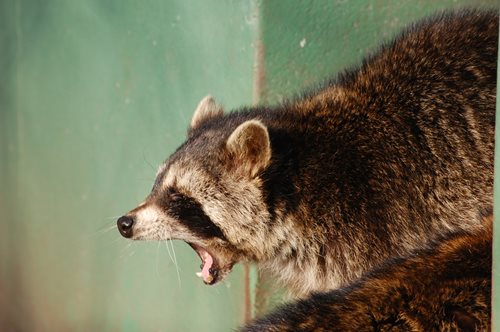
In the region that is now Mississippi, a Jesuit priest was living with the Natchez in 1721 and reported stories of hairy creatures in the forest known to scream loudly and steal livestock. 16th century Spanish explorers and Mexican settlers told tales of the los Vigilantes Oscuros, or "Dark Watchers", large creatures alleged to stalk their camps at night.

The local tribespeople call the largest of the glyphs "Hairy Man", and they are estimated to be between 5 years old. On the Tule River Indian Reservation, petroglyphs created by a tribe of Yokuts at a site called Painted Rock are alleged by some to depict a group of Bigfoot called "the Family". These stories differed in their details regionally and between families in the same community, and are particularly prevalent in the Pacific Northwest. Many of the indigenous cultures across the North American continent include tales of mysterious hair-covered creatures living in forests, and according to anthropologist David Daegling, these legends existed long before contemporary reports of the creature described as Bigfoot. History Indigenous and early records A reproduction of the petroglyphs at Painted Rock. Some footprint casts have also contained claw marks, making it likely that they came from known animals such as bears, which have five toes and claws. The enormous footprints for which the creature is named are claimed to be as large as 24 inches (610 mm) long and 8 inches (200 mm) wide. Michael Rugg, owner of the Bigfoot Discovery Museum, claims to have smelled Bigfoot, stating, "Imagine a skunk that had rolled around in dead animals and had hung around the garbage pits." However, eyeshine is not present in humans or any other known great apes, and so proposed explanations for observable eyeshine off of the ground in the forest include owls, raccoons, or opossums perched in foliage. Some alleged nighttime sightings have stated the creature's eyes "glowed" yellow or red. Ĭommon descriptions include broad shoulders, no visible neck, and long arms, which many skeptics attribute to misidentification of a bear standing upright. In 1971, multiple people in The Dalles, Oregon, filed a police report describing an "overgrown ape", and one of the men claimed to have sighted the creature in the scope of his rifle, but could not bring himself to shoot it because, "It looked more human than animal". Some alleged observations describe Bigfoot as more human than ape, particularly in regards to the face. Anecdotal descriptions estimate a height of roughly 6–9 feet (1.8–2.7 m), with some descriptions having the creatures standing as tall as 10–15 feet (3.0–4.6 m). īigfoot is often described as a large, muscular, and bipedal ape or human-like creature covered in black, dark brown, or dark reddish hair. Description "Sassy the Sasquatch" roadside attraction statue in the Garden of the Gods Wilderness within the Shawnee National Forest.

Bigfoot is an enduring element of popular culture and an icon within the pseudoscience and subculture of cryptozoology. Tales of wild, hair-covered humanoids exist throughout the world, such as the Skunk ape of the southeastern United States, the Almas, Yeren, and Yeti in Asia, the Australian Yowie, and creatures in the mythologies of indigenous people.

Wishful thinking, a cultural increase in environmental concerns, and overall societal awareness of the subject have been cited as additional factors. Folklorists trace the phenomenon of Bigfoot to a combination of factors and sources, including indigenous cultures, the European wild man figure, and folk tales. The majority of scientists do not find any of the remaining evidence compelling, and Instead generally consider it to be the result of a combination of folklore, misidentification, and hoax, rather than a living animal. Most of this evidence has since been identified as hoaxes or misidentification. Įnthusiasts of the subject have offered various forms of dubious evidence to prove Bigfoot's existence, including anecdotal claims of sightings, as well as alleged photographs, video and audio recordings, hair samples, and casts of large footprints. Bigfoot, also commonly referred to as Sasquatch, is a large and hairy human-like mythical creature purported to inhabit forests in North America, particularly in the Pacific Northwest.


 0 kommentar(er)
0 kommentar(er)
